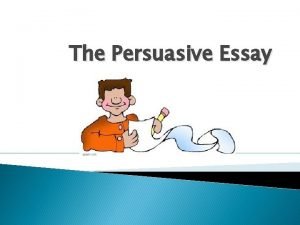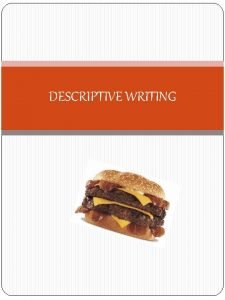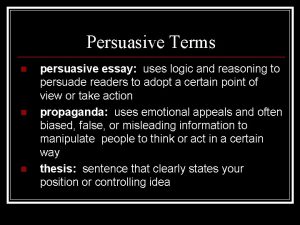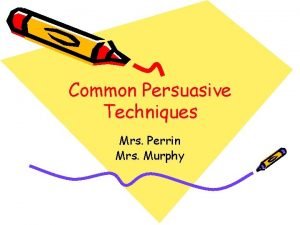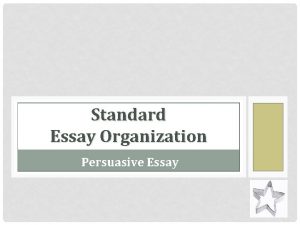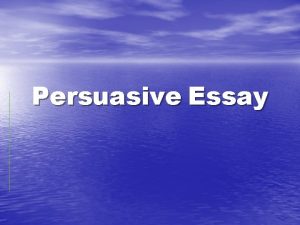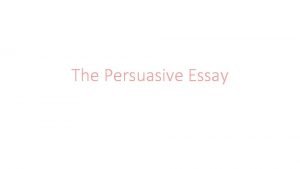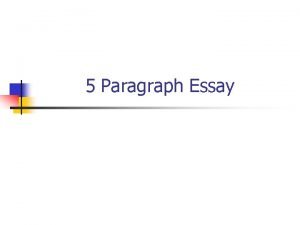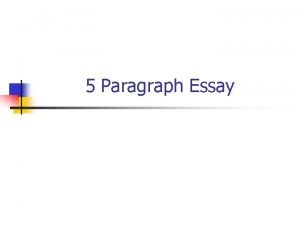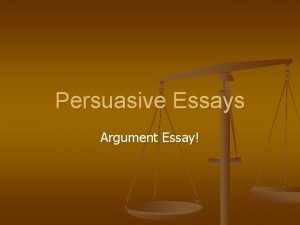The Persuasive Essay Persuasive Essay Common Terms Paragraph










- Slides: 10

The Persuasive Essay

Persuasive Essay Common Terms • Paragraph #1: – Introduction • Hook • General Background • Thesis Statement • Paragraph #2: – Argument #1 • Paragraph #3: – Argument #2 • Paragraph #4: – Argument #3 • Paragraph #5: – Refutation • Paragraph #6: – Conclusion

Paragraph #1: Introduction • Hook – A single sentence that attracts the reader’s attention that is DIRECTLY related to the topic. There are many types: • • Question Definition Strong statement Quotation

• General Background – Several sentences that give the reader some information about the topic. This part does NOT contain any opinions or arguments, just basic information on the topic. For example: Topic: Extending the school year to July. General Background: 3 -4 sentences describing a “normal” school year.

• Thesis Statement – A single sentence written at the END of the introduction. It is the final sentence of the introduction. This sentence states the author’s opinion and 3 arguments (reasons) to support it. For example: I believe that students should be required to wear school uniforms because the uniform is cheaper than other clothes, it makes students in the school equal, and it unites the students in the school.

Paragraph #2 • Argument #1 – Usually the weakest argument – Supporting details – Pattern as follows: • Reason • Example/Textual Evidence • Explanation/Interpretation (What does it mean? How does it prove you right? )

Paragraph #3 • Argument #2 – Usually the next strongest – Supporting details – Pattern as follows: • Reason • Example/Textual Evidence • Explanation/Interpretation (What does it mean? How does it prove you right? )

Paragraph #4 • Argument #3 – The strongest argument: • SUPERMAN ARGUMENT – Supporting details – Pattern as follows: • Reason • Example/Textual Evidence • Explanation/Interpretation (What does it mean? How does it prove you right? )

Paragraph #5 • Refutation: – A sentence stating the opponent’s opinion and then several sentences explaining why your arguments are better. • For example: Some people think that a school uniform takes away a student’s individuality, but I believe that…

Paragraph #6 • Conclusion – Restate the author’s 3 arguments. • No supporting details here – Make a final comment about the topic. • Tell the reader what to do • Tell the reader how to think • Give a global message
